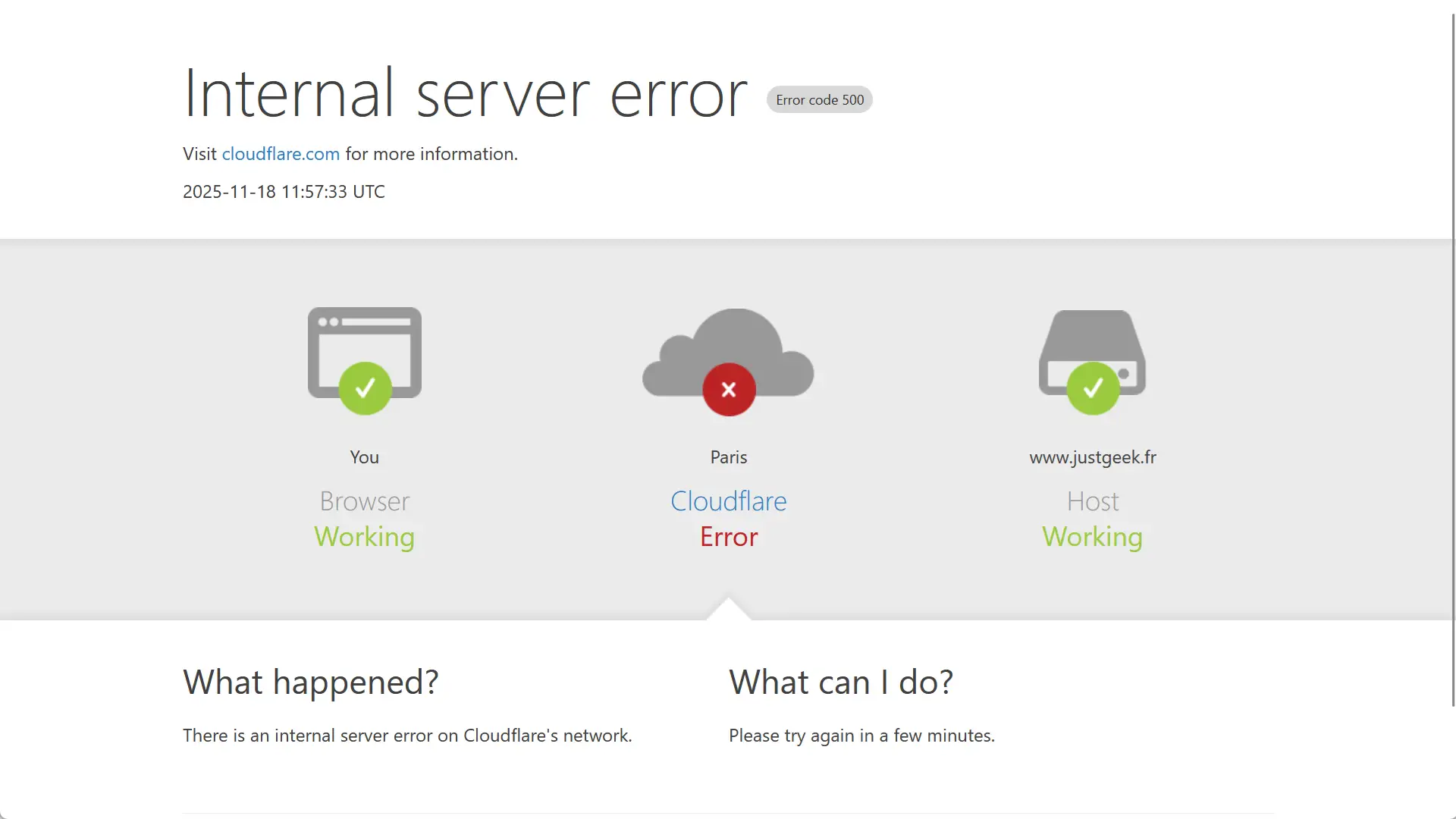On November 18, 2025, a major outage at Cloudflare disrupted thousands of websites worldwide. For hours, developers, businesses, and users wondered whether a cyberattack had struck one of the Internet’s biggest infrastructure providers. The real cause turned out to be far less dramatic—but incredibly impactful.
Cloudflare later published a detailed postmortem. No, it wasn’t a DDoS attack. No hacker breached anything. The culprit was simply a configuration file that became too large for the system to handle, triggering a chain reaction that crippled core services across the network.
Here’s what actually happened behind the scenes.
How One File Brought Down Cloudflare

Cloudflare confirmed it detected no malicious activity during the outage. Instead, the incident originated from a long-standing bug inside Cloudflare’s bot management system.
This system relies on a data source known as the feature file, updated automatically every five minutes. It contains technical patterns used to analyze requests and detect whether traffic comes from legitimate users or bots.
But shortly after Cloudflare modified its internal ClickHouse database, the feature file began producing duplicated data. Its size doubled, surpassing the maximum limits the system could safely process.
When the file exceeded that threshold, the bot detection module began crashing on every machine that used it, causing a wave of HTTP 500 errors across Cloudflare’s ecosystem—including:
- CDN delivery services
- Workers KV
- Access authentication tools
- The Cloudflare dashboard
- Turnstile (Cloudflare’s CAPTCHA solution)
A configuration glitch—nothing more—had taken down a massive slice of the global Internet.
Timeline of the Incident
Here’s how the outage unfolded, minute by minute:
| Time (UTC) | Event |
|---|---|
| 12:05 | A ClickHouse update meant to improve permission handling introduces accidental data duplication. |
| 12:20 | The feature file grows abnormally large due to duplicated entries. |
| 12:28 | Widespread HTTP 500 errors appear on sites using Cloudflare. A DDoS attack is initially suspected. |
| 14:05 | A workaround reduces impact on services like Workers KV and Access. |
| 14:37 | Cloudflare confirms the root cause is the corrupt feature file. Rollback begins. |
| 15:30 | A stable version of the file is deployed globally. Systems start recovering. |
| 18:06 | Cloudflare declares full service restoration. Outage officially closed. |
Cloudflare’s Response: Fixes and Promised Improvements
In its postmortem, Cloudflare acknowledged the severity of the incident and outlined several corrective measures, including:
- Strengthening validation of internal configuration files
- Adding more emergency kill switches to disable problematic modules instantly
- Improving safeguards against cascading internal failures
- Raising size limits on modules like bot management to prevent crashes
Some of these protections were already applied before services were fully restored. Future updates aim to ensure that a single oversized file can never disrupt core services again.
A Stark Reminder About the Fragility of the Web
Although the outage lasted only a few hours, it exposed a concerning reality: a huge portion of the global Internet depends on only a handful of providers. When Cloudflare goes down, nearly one-fifth of the Web goes down with it.
And this disruption wasn’t caused by a sophisticated hack or a massive attack—but by an unchecked configuration file.
Even the largest infrastructure companies remain vulnerable to small mistakes. And when the backbone of the Web relies heavily on one service, a single bug becomes a single point of failure. It’s a lesson for developers, businesses, and publishers alike—ours included, since our own site uses Cloudflare.
Maybe it’s time for the Internet to rethink its dependencies… before the next small problem becomes a big one.
And if you'd like to go a step further in supporting us, you can treat us to a virtual coffee ☕️. Thank you for your support ❤️!

We do not support or promote any form of piracy, copyright infringement, or illegal use of software, video content, or digital resources.
Any mention of third-party sites, tools, or platforms is purely for informational purposes. It is the responsibility of each reader to comply with the laws in their country, as well as the terms of use of the services mentioned.
We strongly encourage the use of legal, open-source, or official solutions in a responsible manner.



Comments